In Canada, responsible pet ownership involves adhering to regulations crafted to uphold the welfare of animals, people, and the environment. Precise guidelines govern the choice of animals suitable as pets. Certain animals are prohibited due to their untamed nature, potential risks they might pose to humans and fellow animals, or their protected status. These regulations can vary from province to province. This article will shed light on various notable animals that are illegal to be pets in Canada. It’s an essential read for those contemplating the idea of bringing a new exotic companion into their household.
1. Bears

Just one look at these mighty creatures, and it’s no wonder bears are illegal pets to own in Canada!
©Tinnaporn Sathapornnanont/Shutterstock.com
Toronto prohibits the ownership of bears as pets, which are large mammals with characteristics such as stout legs, elongated snouts, small round ears, thick fur, plantigrade paws with five non-retractable claws, and short tails.
Black bears can generally be 4 to 7 feet long with a 1- to 8-inch tail. Polar bears can have an impressive length of 7 to 10 feet, while brown bears can reach towering heights of up to 9 feet.
Bear’s diet includes fruits, grains, fish, insects, birds, and other animals. This dietary diversity adds both richness and adaptability to their eating habits.
In the city of Toronto, the prohibition against keeping any type of bear species as pets is grounded in important reasons. Bears can display aggressive behavior towards humans, not only when driven by hunger but also when safeguarding their offspring. Worth noting is that a considerable number of fatal black bear attacks are classified as predatory.
According to a bear expert, in 88 percent of fatal encounters with black bears, the bear exhibited predatory behavior.
So, all in all, it’s probably best that they’ve banned having bears as pets, wouldn’t you say?
2. Penguins
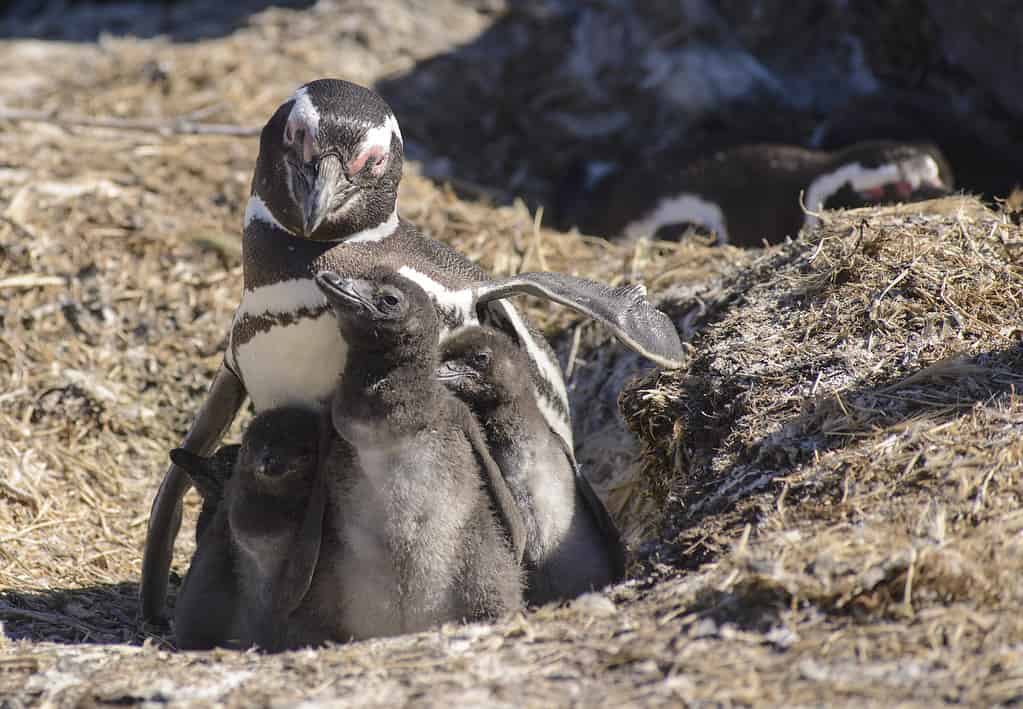
As penguins are wild animals that need to be protected, Canada has banned penguins from the list of allowed pets.
©Buenaventuramariano/ via Getty Images
Penguins sport a body design that’s both streamlined and fusiform, tapering at both ends. This sleek shape is what makes them such skillful swimmers. Their anatomy comprises a compact neck, a prominent head, and a lengthened torso, complete with a sturdy, wedge-shaped tail. Positioned at the back of their bodies are their legs and webbed feet, aiding in their swimming abilities.
The height of various penguin species ranges from approximately 14 to 45 inches. Their diet is mostly made up of fish, squid, and krill, although there are slight variations in food preferences among different penguin species.
Penguins have been hunted throughout history for a variety of needs. People have shown particular interest in these little birds for things such as their meat, oil, and valuable fat, which was used as fuel in older times. It’s also important to mention that compared to other creatures, penguins are one of the few species hit hardest by climate change. For these very reasons, Canada has taken a stand by making it against the law to own, trade, or keep these magnificent birds.
3. Skunks

While they may look cute, one wrong move and a skunk can really stink up your house!
©bobloblaw/iStock via Getty Images
Skunks possess somewhat elongated torsos, short yet muscular legs, and lengthy front claws that are well-suited for digging. Each foot has five toes. While the most prevalent fur coloration is black and white, there are skunks with brown or grey fur, and a handful have a cream hue. Notably, all skunks exhibit stripes, a feature present even at birth.
Fully grown skunks measure approximately 18 to 18 inches in length, minus the tail. They have a varied diet that includes rats, mice, voles, birds and their eggs, and even dead animals.
The risk of rabies spreading through skunk bites played a big role in the choice to prevent skunks from becoming pets. Unlike cats and dogs, skunks don’t have an approved rabies vaccine. This is why, in Ontario, owning a skunk as a pet has been against the rules since 1999.
4. Rattlesnakes
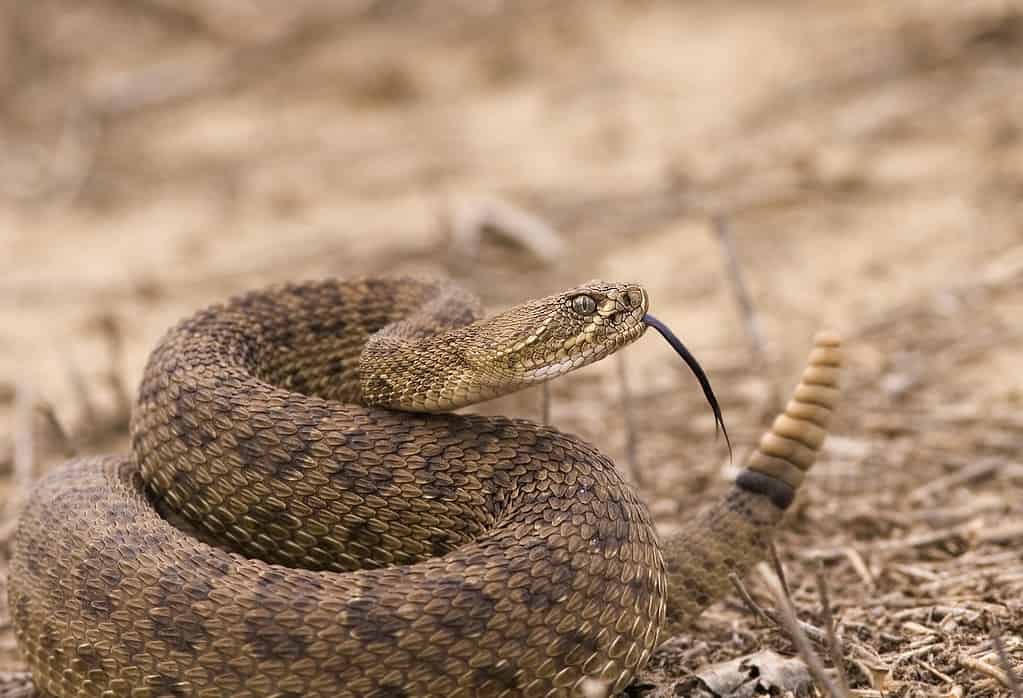
Due to the need to conserve these rattlesnakes in their own natural habitat, it is illegal to own this snake in various Canadian provinces, including British Columbia.
©Steve Mcsweeny/iStock via Getty Images
Rattlesnakes, legless reptiles, can stretch to a maximum length of 8 feet. Their colors and patterns, which vary among species, most commonly feature scales in shades of black, gray, olive, brown, or yellow. Sometimes, these scales are adorned with banded, diamond-shaped, or spotted designs.
Usually, fully grown rattlesnakes are between 3 to 6 feet. Their diet consists of creatures like rodents, squirrels, birds, rabbits, lizards, and even frogs.
While the desire to own a rattlesnake as a pet might exist amongst some enthusiasts, it’s crucial to note that various Canadian provinces prohibit this. For instance, in British Columbia, there are very strict regulations against causing harm, capturing, or even killing these rattlesnakes. However, it’s important to recognize that these regulations aren’t uniform throughout the entire country. The logic behind these legal restrictions stems from the urgent need to conserve and protect these reptiles in their natural habitat.
5. Pandas

Although they look cute, pandas are a vulnerable species.
©plavi011/Shutterstock.com
Pandas feature a unique black and white fur pattern, with black areas surrounding their eyes, ears, muzzle, legs, and shoulders. Their dense, woolen fur helps them stay warm in the chilly mountain habitats.
Giant pandas match the size of American black bears, spanning from 4 to 6 feet in length. Their menu is predominantly made up of bamboo, encompassing its roots, stems, shoots, and leaves, accounting for a whopping 99% of their food intake. Even though their digestive system leans toward that of carnivores, they mix things up by occasionally indulging in eggs, small critters, and carrion, which constitute the remaining 1% of their diet.
Pandas may look adorable, but they aren’t the best pets. They were once listed as endangered but are currently classified as a vulnerable species. This status makes it illegal to keep them as pets in Canada.
6. Lions
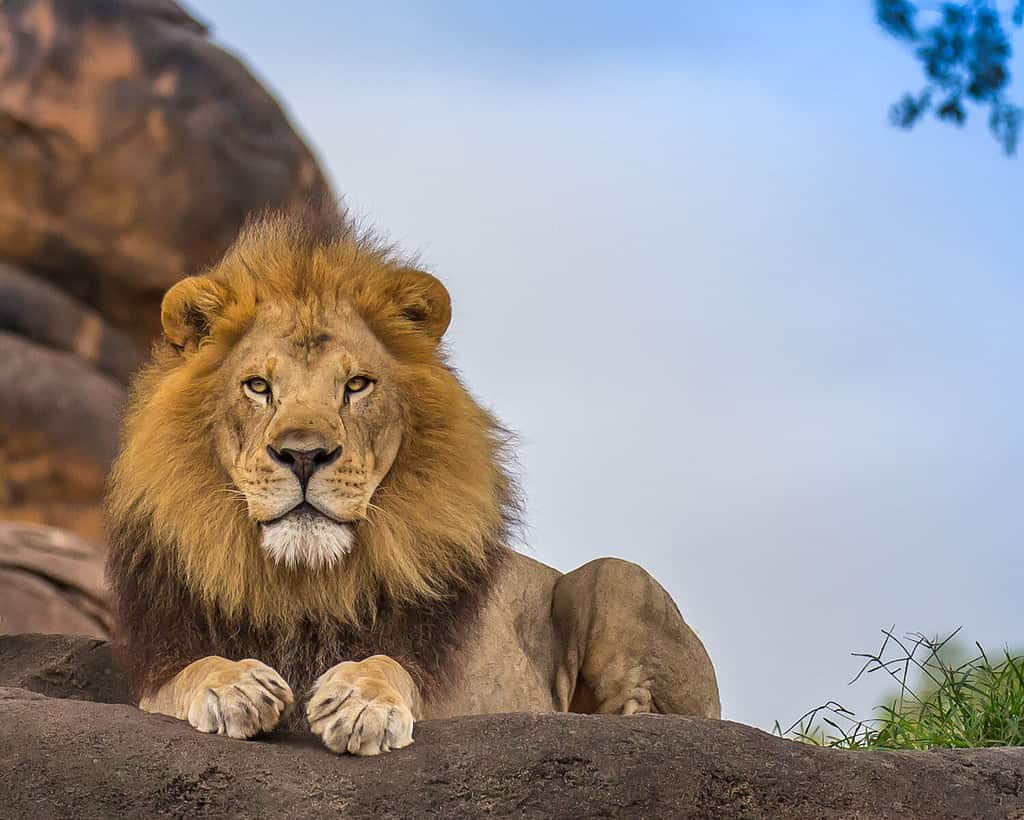
Probably best not to make a pet out of a dangerous big cat like a lion!
©Jrossphoto/Shutterstock.com
Male lions are larger than females and possess a vast mane of hair that extends from their head and neck to their underside. Lion cubs are born with light-colored spots on their fur, which disappear as they mature and help them stay hidden when they are little.
The height of a lion at the shoulder ranges from 3.5 to 4 feet. Being carnivorous, lions exclusively consume meat.
In British Columbia, owning lions is prohibited. However, some provinces do allow it. Despite its legality in certain provinces, many local governments forbid keeping big cats like lions. The inability to tame or domesticate lions and their incompatible needs with humans are the primary reasons for making them illegal as pets.
7. Leopards
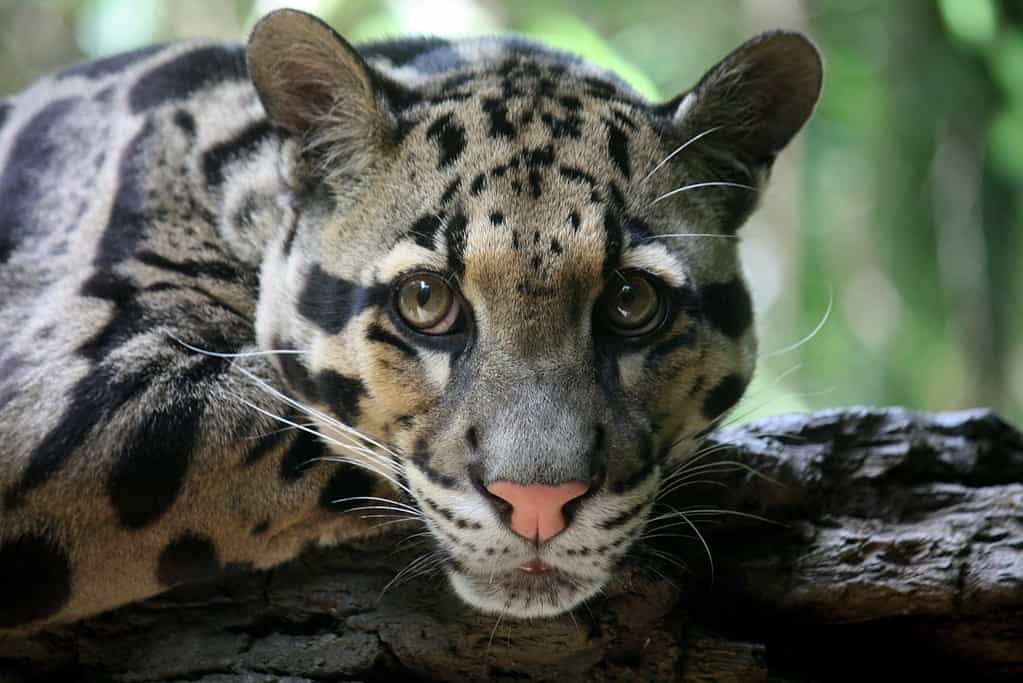
While Ontario has no laws against keeping leopards as pets, Toronto does.
©Ltshears/CC BY-SA 3.0 – License
Leopards usually wear a light coat with dark spots shaped like rosettes. But black leopards, also called black panthers, have spots that are hard to see. In fact, they blend in so well that it makes their coat seem almost entirely black.
Among the big cats, leopards are the smallest. They’re around 28 inches tall at the shoulder, but their shoulder height can vary from 17.5 to 30.5 inches. Leopards are meat-eaters.
The legality of owning leopards varies across Canada. For instance, British Columbia prohibits keeping leopards and tigers, whereas Ontario has no specific laws on the matter, although they are banned in Toronto. Nonetheless, attempting to keep a tiger in your backyard is likely to encounter problems at the local level.
8. Tigers

Another pet illegal to own in Canada is the tiger.
©Thorsten Spoerlein/Shutterstock.com
Tigers have a reddish-orange coat with black stripes, a white underside, and white spots on their ears. The stripe patterns of tigers are unique to each individual, similar to human fingerprints. This uniqueness allows researchers to identify individual tigers when conducting field studies.
Tigers are the largest species of cats globally. The largest among them are the Amur tigers, also known as Siberian tigers, which can measure up to 10 feet from the nose to the tail tip. They primarily feed on meat from various animals.
Keeping tigers as pets requires high-security enclosures spanning acres of land and the ability to provide pounds of meat daily. The risks associated with attacks far exceed any potential benefits, rendering them unsuitable as pets. Consequently, many Canadian provinces have made it illegal to keep tigers as pets.
9. Kangaroos

These marsupials are pretty handy with their limbs, including their tail.
©Nick Fox/Shutterstock.com
Kangaroos come clad in short fur and boast strong back legs, large feet, petite front limbs, and an elongated tail. Their acute eyesight and keen hearing enhance their senses. Their fur can come in shades of grey, red, or light to dark brown, varying based on the species. But that robust tail isn’t just a showpiece — it’s a crucial tool for maintaining balance while hopping and even serves as an extra limb for navigating.
With a reputation for being the largest marsupials on the planet, kangaroos can stand very tall. Their heights can range anywhere from 3 to 8 feet. Their diet is strictly herbivorous, primarily centered around grass, although they do enjoy snacking on various other plants.
Despite their undeniable allure, kangaroos can’t be domesticated like our familiar companions, cats and dogs. Early training doesn’t guarantee that their innate wild instincts won’t surface, potentially posing hazards to people nearby. While instances of kangaroo ownership and breeding have cropped up in Canada, stricter regulations are now in place to restrict their status as pets.
10. Hyenas
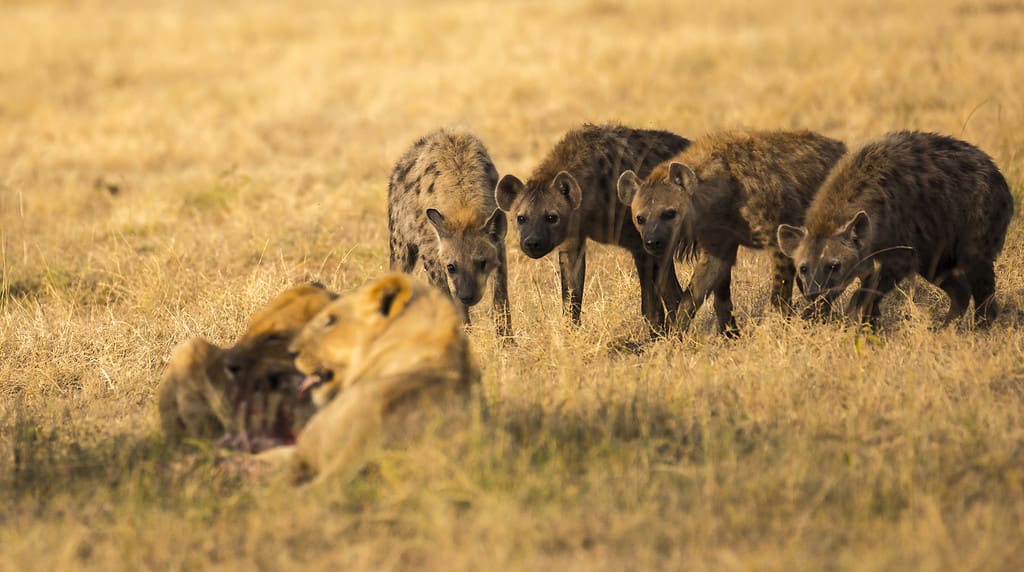
While hyenas are scavengers, they personally hunt around 70% of their meals.
©Staincliffe/iStock via Getty Images
Hyenas come with a big head, a lengthy and muscular neck, plus powerful jaws that grant them the mightiest bite among mammals. Their front legs take the lead in length compared to their hind legs, shaping their silhouette into something akin to a wildebeest or bison. Notably, the spotted hyena’s paws flaunt four toes, each with non-retractable claws.
When it comes to size, hyenas span from 4.7 to 6 feet. Around 70% of their nutrition stems from animals they’ve hunted themselves. Their menu is diverse, ranging from animals they’ve taken down, carrion, bones, and plant materials to the less appetizing animal excrements.
The notion of owning hyenas has been deemed off-limits across various parts of Canada, including British Columbia, and this restriction stands for some very valid reasons.
They are not suitable pets as you cannot train them, and they are naturally aggressive. Hyenas typically roam vast territories in groups, attacking and consuming smaller animals raw, which is certainly not acceptable behavior in a dog park.
11. Pit Bulls
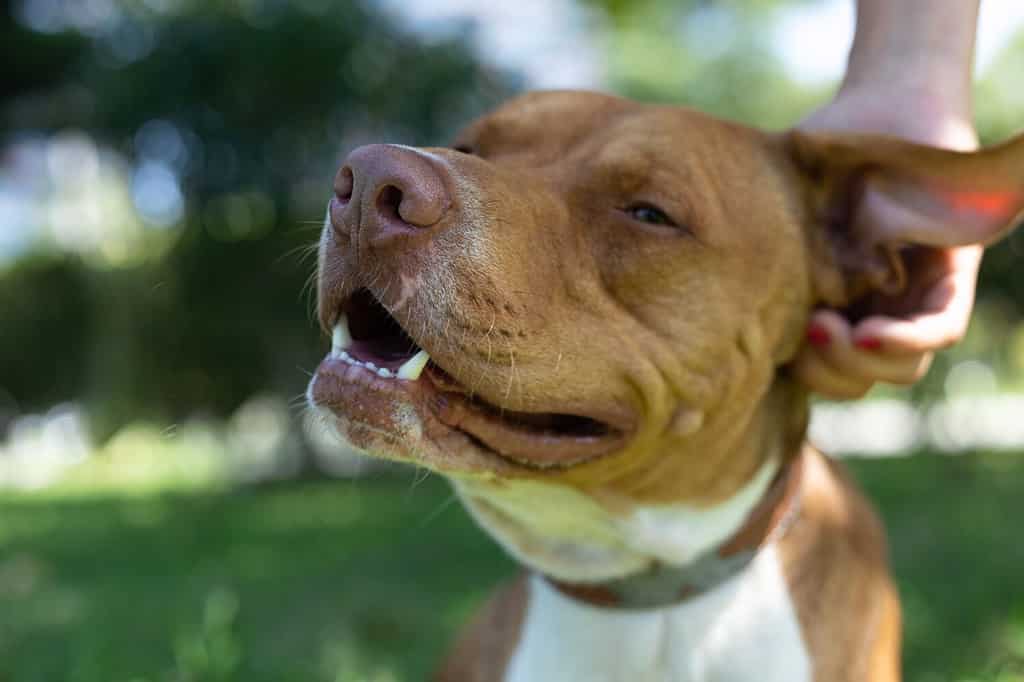
You might be surprised to hear this one, but pit bulls are illegal in Ontario!
©Tosha Bu/Shutterstock.com
Pit bulls typically have a blocky head, a broad nose, and large, almond-shaped eyes. Pit bulls fall into the medium-sized category, with males typically standing at a height of 18 to 21 inches. Given their carnivorous nature, a diet centered around meat and bones suits them best.
Pit bulls are much-loved by dog enthusiasts, but there are rules about keeping them as pets in different parts of Canada. For example, places like Ontario have a ban on pit bulls.
12. Crocodiles
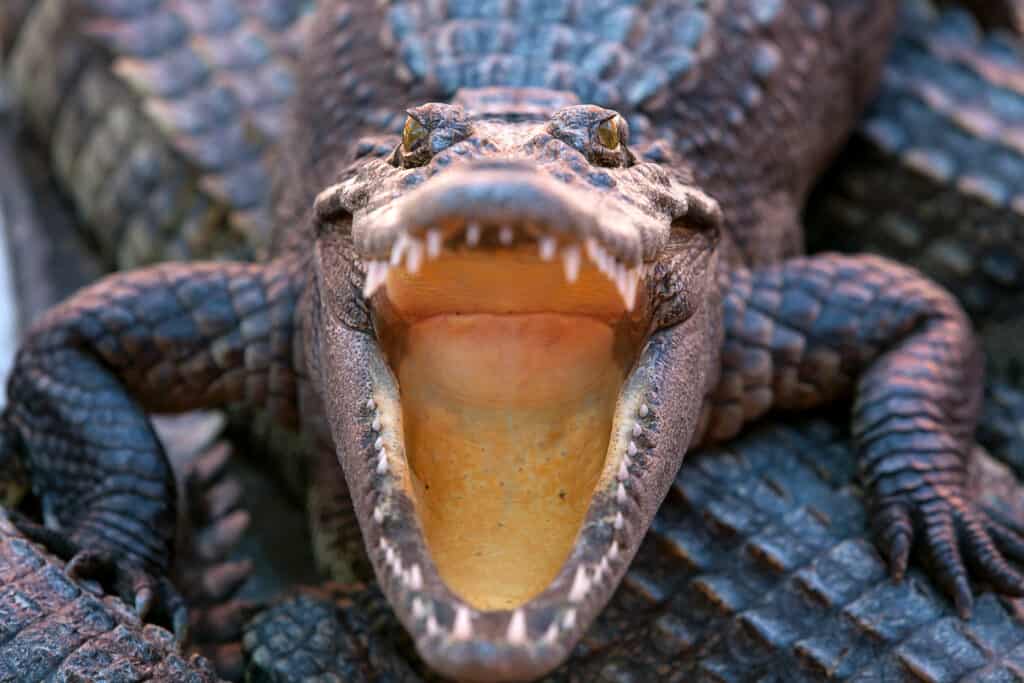
Who would honestly want to keep a crocodile in the bedroom anyway?
©nattanan726/Shutterstock.com
Crocodiles typically have a long snout filled with teeth, eyes, and nostrils located on top of their heads. They possess tough skin with bony plates known as osteoderms, a streamlined body, a long muscular tail, and short limbs with clawed, webbed feet.
Crocodiles consume a variety of prey, including fish, insects, lizards, frogs, crustaceans, and small mammals.
Having alligators and crocodiles as pets is typically a no-no in Canada, and it makes sense why! After all, these reptiles are natural predators and don’t fit the bill as suitable companion animals.
Other Banned Pets in Canada
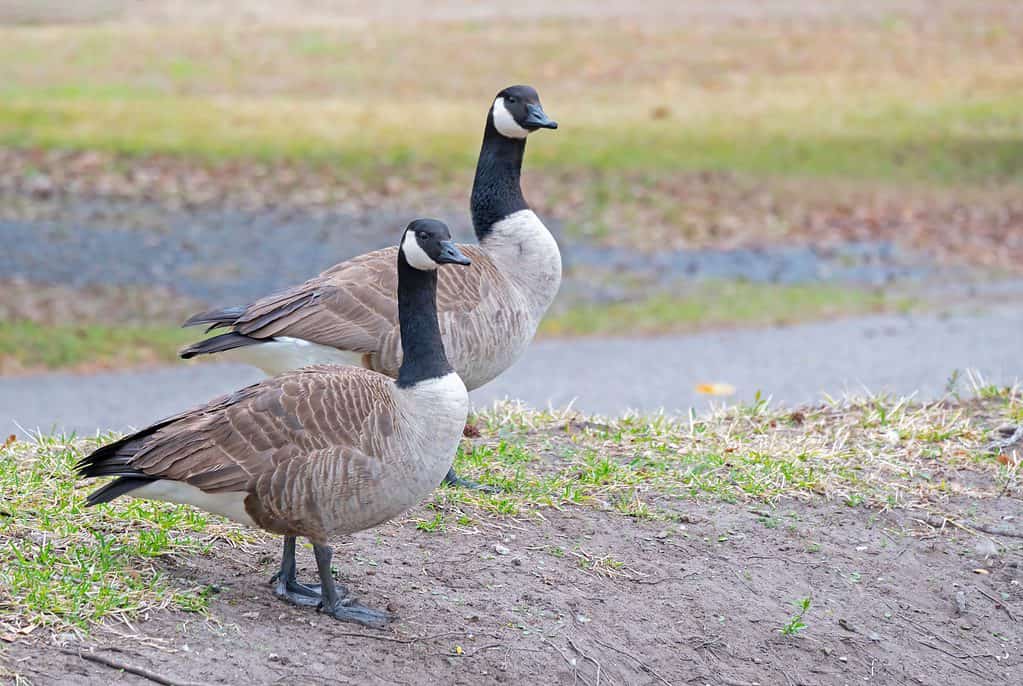
Another animal you can’t keep as a pet in Canada is the Canada goose.
©Daniel Wright98/Shutterstock.com
Curious to know more? Here are some other banned pets in the country!
- Cassowaries, though visually striking, are prohibited in British Columbia because they can become aggressive and have inflicted deadly wounds on both dogs and people. This makes them one of the most dangerous birds globally.
- Canada geese are a common sight, but it’s illegal to keep one as a pet. The Migratory Birds Convention Act in Canada forbids owning any wild birds, including these geese. It’s also important to mention here they aren’t the most hygienic creatures. Geese droppings can transmit many types of bacteria, which can cause serious illnesses.
- Canada also doesn’t allow residents to keep alligators as pets, which makes sense a lot of sense when you think about it. Considering their wild and ruthless nature, these predatory reptiles are not suitable companions for humans.
- Owning a killer whale is not allowed in Ontario, and the sheer practicality of keeping one should deter anyone from considering it as a pet.
- In 2013, a tragic incident in New Brunswick underscored the risks associated with exotic pets when two boys were strangled by an African rock python that had escaped captivity. This specific species was, and still remains, banned from being kept as a pet in the province.
- Canada generally does not allow people to keep monkeys, chimpanzees, orangutans, gorillas, and other primates as pets. This regulation came into the spotlight because of the famous “IKEA monkey” incident in 2014, where a Japanese macaque managed to escape its owner’s vehicle and wandered around a Toronto IKEA store.
- Although rules vary across Canada, British Columbia specifically prohibits owning giraffes as pets due to obvious reasons of space and the wild nature of the animal.
- Elephants are massive creatures that are not accustomed to captivity as pets, and their well-being requirements cannot be fulfilled in pet stores or residences. As a result, Toronto has prohibited keeping them as pets.
Summary of Illegal Pets to Own in Canada
| Number | Pet | Scientific Name |
|---|---|---|
| 1 | Bear | Ursidae |
| 2 | Penguin | Spheniscidae |
| 3 | Skunks | Mephitidae |
| 4 | Rattlesnake | Crotalus |
| 5 | Panda | Ailuropoda melanoleuca |
| 6 | Lions | Panthera leo |
| 7 | Leopard | Panthera pardus |
| 8 | Tiger | Panthera tigris |
| 9 | Kangaroo | Macropodidae |
| 10 | Hyenas | Hyaenidae |
| 11 | Pitbull | Canis lupus familiaris |
| 12 | Crocodile | Crocodylidae |
The photo featured at the top of this post is © Tinnaporn Sathapornnanont/Shutterstock.com
Thank you for reading! Have some feedback for us? Contact the AZ Animals editorial team.






